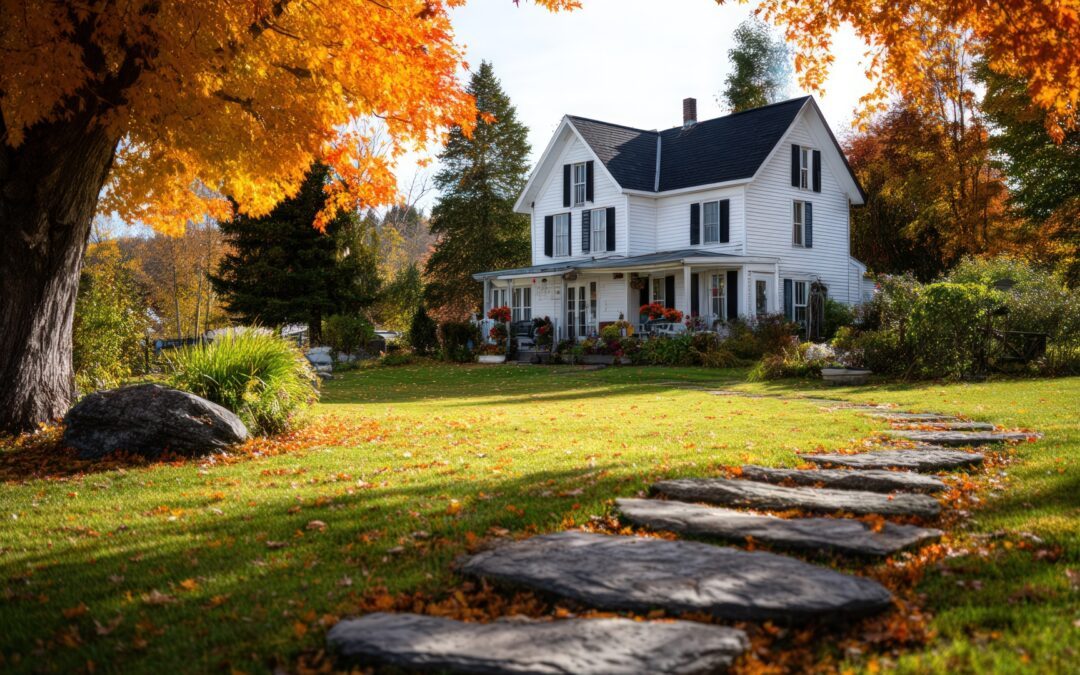Life in Colorado Springs has its own rhythm. One moment, you’re enjoying backyard barbecues and warm evenings, and the next, you’re pulling on a jacket for chilly morning walks. The transition between summer and fall can be quick, which means your outdoor spaces need thoughtful attention to stay beautiful, functional, and ready for the season ahead. With the right timing and a few smart strategies, you can set your yard up for success before the first frost settles in.
In this guide, we’ll walk you through when and how to update planters, prep your beds, and refresh hardscape surfaces. Each step will help you protect your investment, showcase the natural beauty of Colorado Springs, and keep outdoor spaces welcoming even as the temperatures drop.
Why Seasonal Transitions Matter in Colorado Springs
Our high-altitude climate brings challenges that homeowners in other regions don’t always face. Hot days can stretch late into September, yet overnight lows can dip quickly, creating stress for plants that aren’t prepared. Afternoon thunderstorms and late-summer hail are another reminder of why resilient landscaping matters here.
By taking action in late summer and early fall, you’ll protect delicate plants, prepare your soil for a dormant season, and ensure patios, walkways, and other hardscaped areas are safe and attractive through the coming months. These steps not only safeguard your outdoor spaces but also make springtime transitions much easier when the snow melts away.
Step 1: Refreshing and Updating Planters
Planters bring color and character to porches, patios, and decks, but summer annuals rarely last past September in Colorado Springs. As temperatures start to dip consistently into the 50s at night, it’s time to start transitioning.
-
Remove spent annuals: Pull out petunias, geraniums, or other summer favorites that are beginning to fade. Leaving them too long can attract pests and detract from curb appeal.
-
Introduce cool-season color: Hardy plants like pansies, ornamental kale, and chrysanthemums thrive in cooler weather. They add bursts of seasonal beauty and can tolerate the fluctuating daytime warmth and chilly evenings of early fall.
-
Consider native options: Coneflower or yarrow, both Colorado-friendly perennials, work beautifully in transitional planters and can return in future seasons if planted in garden beds before winter sets in.
By refreshing planters early in the season, you extend the usability of outdoor living spaces while reflecting fall’s natural beauty.
Step 2: Prepping Beds for the Season Ahead
Garden beds need careful attention before the first frost. A little work now can save you from major cleanup in the spring and set the stage for healthier growth.
1. Clear out summer growth
Pull faded annuals and trim back perennials that are finished blooming. For plants that provide winter interest—like ornamental grasses or seed heads attractive to birds—leave them in place until spring.
2. Add a protective mulch layer
A two- to three-inch layer of organic mulch helps regulate soil temperature and retain moisture. In Colorado Springs, where fall weather swings between hot afternoons and cold nights, mulch acts as insulation for your plants’ roots.
3. Divide and transplant perennials
Early fall is a great time to divide overgrown clumps of irises or daylilies. With the cooler air and still-warm soil, plants can establish roots before winter.
4. Weed naturally
Before beds are mulched, take time to hand-pull weeds. This prevents them from overwintering and spreading once spring returns. A few minutes now pays off in easier maintenance next year.
Step 3: Cleaning and Caring for Hardscape Surfaces
Hardscape areas—patios, walkways, retaining walls—often get overlooked during seasonal transitions. Yet in Colorado Springs, where freeze-thaw cycles are frequent, neglecting these surfaces can lead to cracks, erosion, and safety hazards.
-
Sweep and rinse thoroughly: Remove summer debris, leaves, and dirt. Doing so prevents staining and reduces the chance of slippery surfaces once snow and ice arrive.
-
Check drainage: Make sure water is flowing away from your home and hardscape structures. Poor drainage can cause pooling, which worsens during fall rains and early freezes.
-
Seal natural cracks: While we don’t recommend unnecessary chemical sealants, addressing minor cracks with sand or gravel filler can keep surfaces safer and prevent worsening damage.
-
Store lightweight furniture: If you have patio furniture that won’t be used during the colder months, put it away now to reduce wear and tear from fluctuating weather conditions.
A clean, well-prepped hardscape not only looks inviting but also stands up better to winter’s challenges.
Step 4: Timing Your Tasks
Colorado Springs homeowners know that timing is everything. With unpredictable early frosts and the possibility of warm September afternoons, you’ll want to plan carefully.
-
Late August to early September: Begin updating planters and cleaning hardscape.
-
Mid-September: Focus on prepping beds and dividing perennials.
-
Late September to October: Apply mulch and finalize planter swaps for cold-weather flowers.
Keep an eye on weather forecasts, especially for frost advisories. A sudden cold snap can happen earlier than expected, and being prepared means your yard won’t be caught off guard.
Step 5: Adding Seasonal Touches
Beyond the practical, fall landscaping is also about creating a welcoming environment. Adding a few decorative or functional touches keeps outdoor living enjoyable even as the evenings cool.
-
Incorporate natural décor: Pumpkins, gourds, and dried cornstalks pair well with refreshed planters and highlight the season’s charm.
-
Light the way: Solar-powered pathway lights or string lights extend the usability of outdoor areas and provide safety as daylight hours shorten.
-
Create cozy corners: If you have a fire pit or outdoor seating area, arrange it now for fall gatherings. A few blankets or weather-resistant cushions make the space inviting.
These small updates help you enjoy your yard throughout the season, rather than simply preparing it for dormancy.
Colorado Springs-Specific Considerations
What sets landscaping in Colorado Springs apart is the altitude. The thinner air and strong sun can dry out plants quickly, even in cooler months. At the same time, our soil tends to be rocky, which makes drainage especially important.
Choosing native and drought-tolerant plants, using organic mulch, and focusing on low-maintenance hardscaping are strategies that not only align with local conditions but also reduce the time and effort you need to invest. This approach ensures your landscape remains both sustainable and beautiful, no matter the season.
Final Thoughts
Transitioning your landscape from summer to fall doesn’t have to feel overwhelming. By taking the time now to update planters, prepare garden beds, and refresh hardscape surfaces, you’ll protect your outdoor spaces from Colorado’s unpredictable weather while keeping them welcoming well into the season.
Whether you’re hosting a fall gathering, enjoying quiet evenings outside, or simply looking ahead to a smoother spring, these steps set the foundation for success.






